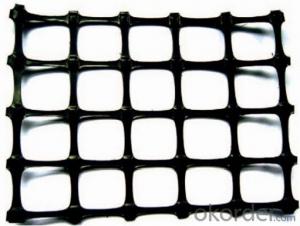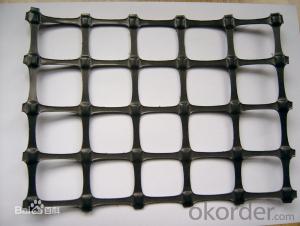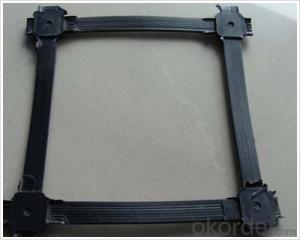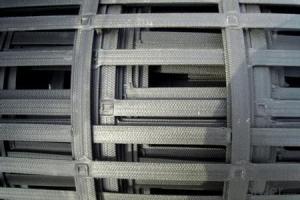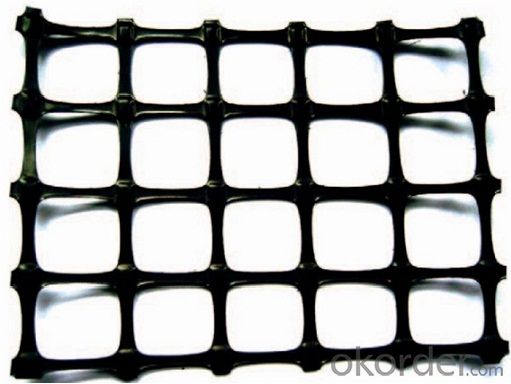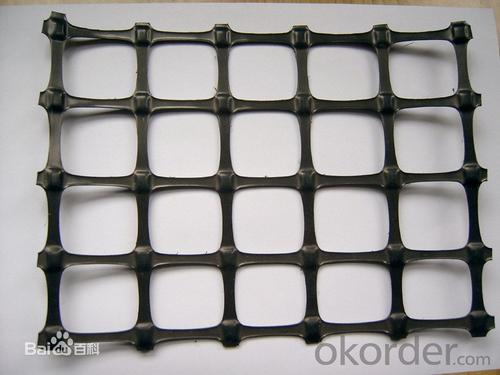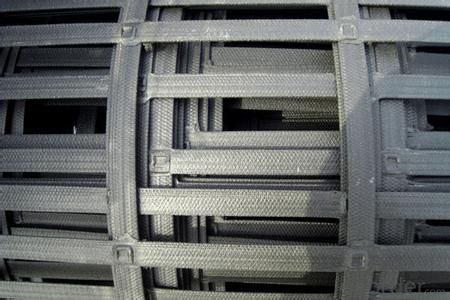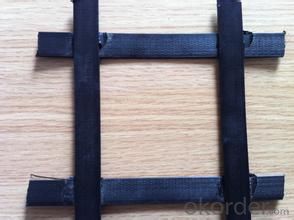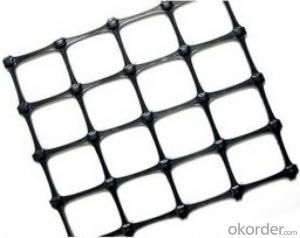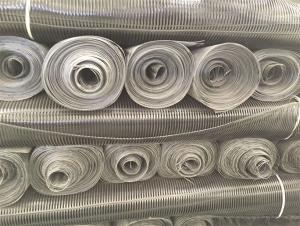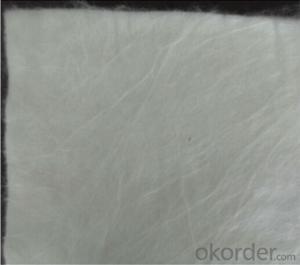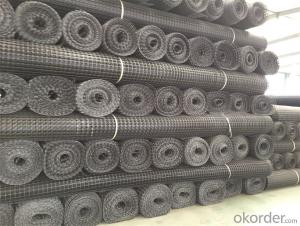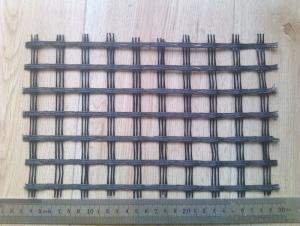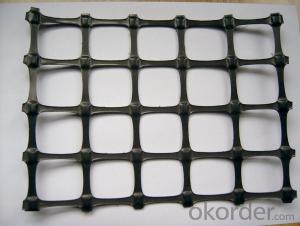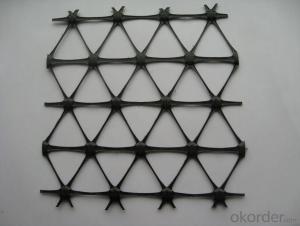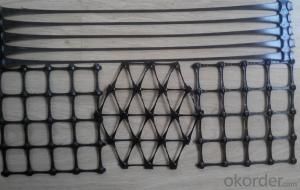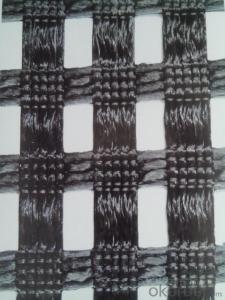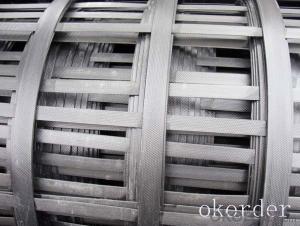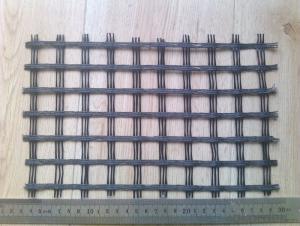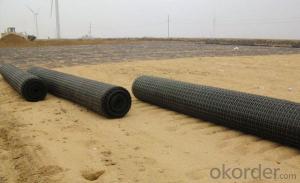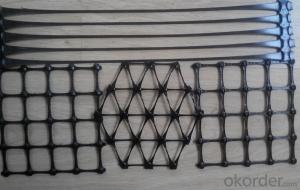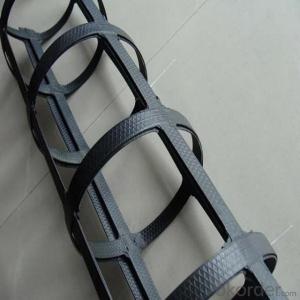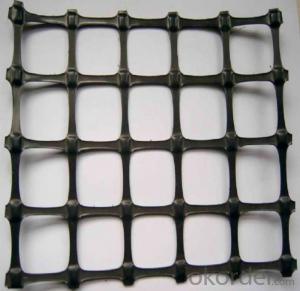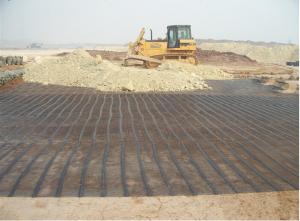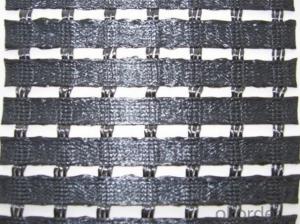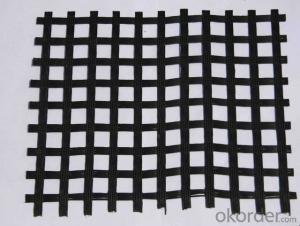Driveway Biaxial Steel Plastic Uniaxial Geogrid
- Loading Port:
- Tianjin
- Payment Terms:
- TT OR LC
- Min Order Qty:
- 500 m²
- Supply Capability:
- 100000 m²/month
OKorder Service Pledge
OKorder Financial Service
You Might Also Like
Black 100% new raw material steel plastic geogrid
suppliers from china
Description
Plastic biaxial geogrid with high strength steel wire (or other fiber), through special processing, and polyethylene (PE) or polypropylene (PP), and adding other assistants, by extrusion into composite type high tensile belt, and the surface is rough textured, for high strength reinforced geotextile strips. The single band, the longitudinal, transverse certain space preparation or clamping arrangement, with special reinforcement welding technology welding the connection point bonding and molding, is reinforced with Geogrid.
Properties
High stength,small deformation, homogenous stucture, easy for constrution etc.
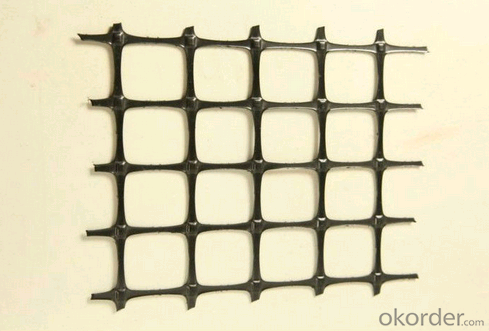
Application
Make reinforcement treatment for varions kinds of sot soil foundation and strengthen shearing resistance of the soil body,used in reinforcement of retaining wall and widening of old road.
It is also used as protect-support net in the coal mine when layer mining of thick (coal) seam, and support of road way in the coal mine.
Specification
| Specifications | GSZ30- 30 | GSZ40-40 | GSZ50-50 | GSZ60-60 | GSZ80-80 | GSZ100- 100 | GSZ150-150 |
| Tensile Strength KN/m(LD) | ≥30 | ≥40 | ≥50 | ≥60 | ≥80 | ≥100 | ≥150 |
| Tensile Strength KN/m(TD) | ≥30 | ≥40 | ≥50 | ≥60 | ≥80 | ≥100 | ≥150 |
| Elongation Rate(LD TD) | ≤2 | ≤2 | ≤2 | ≤2 | ≤2 | ≤2 | ≤2 |
| Tensile Strength at 1% Elongation Rate(LD) | ≥20 | ≥32 | ≥40 | ≥48 | ≥63 | ≥81 | ≥125 |
| Tensile Strength at 1% Elongation Rate(TD) | ≥20 | ≥32 | ≥40 | ≥48 | ≥63 | ≥81 | ≥125 |
| Limit PeelForce at Welded Bonded Point N | ≥100 | ≥100 | ≥100 | ≥100 | ≥100 | ≥100 | ≥100 |
| Products in the range of coal mine | Fire out time from outer flam | ≤3 | |||||
| Surface resistivity | <1×109< span=""> | ||||||
| Packaging Details: | according to your need |
| Delivery Detail: | 7days |
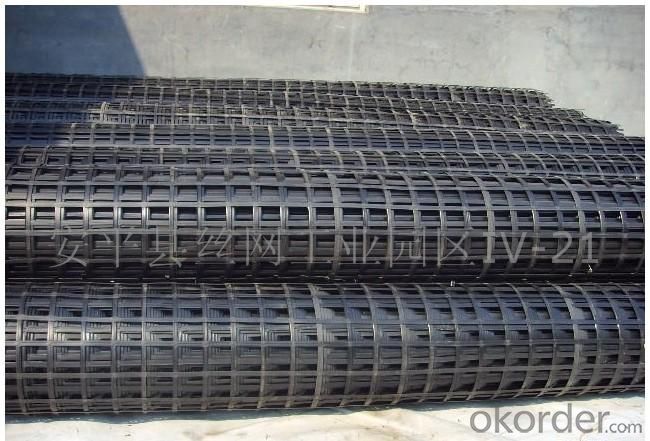
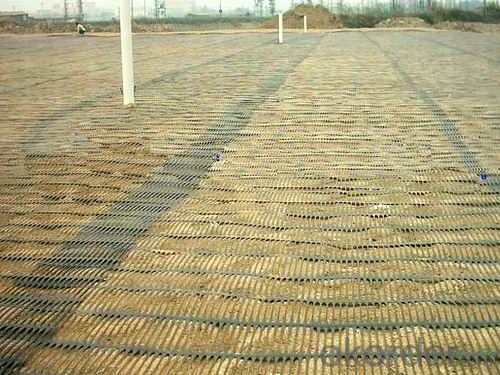
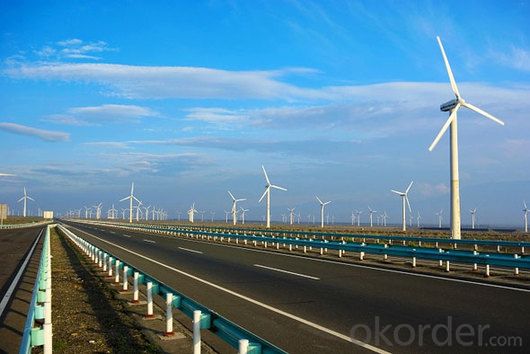
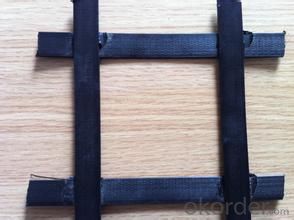
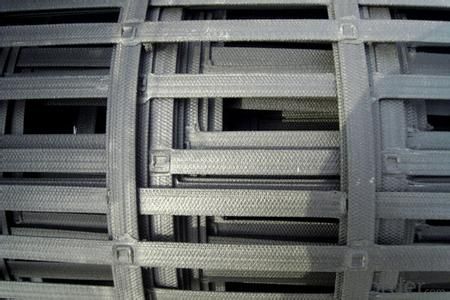
FAQ
1. How about the delivery time?
Lead time since receipt of 30% T/T deposit payment: 3 weeks.
2. What kind of payments does jenor support?
T/T, L/C, Cash are accepted.
3. What's are the MOQ?
We can according to your condition to set the MOQ.
And we can provide you samples for quality inspection.
4. Do you charge for the samples?
Accordeing to our company policy, the samples are freee, we only charge the freight fee. And we will return the freight fee If you set the order .
5. Can you produce the product according to customers' requirements ?
Sure, we are professional manufacturer, OEM and ODM are both welcome.
6. Can you tell me your main customers?
That's our customers' privacy, we should protect their information. At the same time, please rest assured that your information is also safe here.
- Q: Can geogrids be used in soil stabilization for sports fields?
- Yes, geogrids can be used in soil stabilization for sports fields. Geogrids are commonly used to reinforce soil, increase its strength and stability, and prevent erosion. They can help distribute loads and minimize soil movement, making them suitable for sports fields that experience heavy foot traffic and require a stable playing surface.
- Q: Can geogrids be used in retaining walls for industrial facilities?
- Yes, geogrids can be used in retaining walls for industrial facilities. Geogrids are commonly used in retaining walls to increase their stability by providing soil reinforcement. They help distribute the forces exerted by the retained soil, making them suitable for use in retaining walls for industrial facilities where there may be higher loads and potentially unstable soil conditions.
- Q: The difference between polyester glass fiber cloth and glass geogrid
- Hello, this is two different products
- Q: How do geogrids improve the load distribution in paved surfaces?
- Geogrids improve the load distribution in paved surfaces by providing reinforcement and stabilization to the base layers of the pavement. They distribute the load across a larger area, reducing the stress on the pavement and preventing cracks, rutting, and other forms of pavement distress.
- Q: Are geogrids suitable for reinforcement of mechanically stabilized earth slopes?
- Yes, geogrids are suitable for reinforcement of mechanically stabilized earth slopes. Geogrids are synthetic materials that can enhance the stability and strength of soil structures by distributing loads and reducing soil movement. They are commonly used in mechanically stabilized earth slopes to improve their stability, prevent erosion, and increase the overall durability of the slopes. Geogrids provide efficient reinforcement and are cost-effective solutions for stabilizing slopes in various engineering and construction projects.
- Q: Are geogrids suitable for use in steep slopes?
- Yes, geogrids are suitable for use in steep slopes. They provide reinforcement and stability to the soil, reducing the risk of erosion and landslides. Geogrids are designed to distribute loads and improve the overall strength of the slope, making them an effective solution for steep terrain.
- Q: Are geogrids suitable for slope stabilization?
- Yes, geogrids are suitable for slope stabilization. Geogrids are commonly used in engineering and construction projects to reinforce and stabilize slopes. They provide additional strength and stability to the soil, preventing erosion and potential slope failures. Additionally, geogrids can be easily installed and are cost-effective, making them a popular choice for slope stabilization projects.
- Q: Can geogrids be used in reinforcement of bridge abutments and wing walls?
- Yes, geogrids can be used in the reinforcement of bridge abutments and wing walls. Geogrids are commonly used in civil engineering projects to provide stability and increase the load-bearing capacity of soil. By placing geogrids in the backfill soil behind bridge abutments and wing walls, they can help distribute the loads and prevent soil erosion. This reinforcement technique improves the overall structural integrity of the bridge and enhances its long-term performance.
- Q: How do geogrids help in reducing construction equipment requirements?
- Geogrids help in reducing construction equipment requirements by providing soil stabilization, reinforcement, and confinement. They distribute the load across a wider area, reducing the need for heavy machinery and excavation. This results in cost savings, less fuel consumption, and faster construction processes.
- Q: Do geogrids require any maintenance?
- Yes, geogrids require minimal maintenance. Periodic inspections should be conducted to ensure they are functioning properly and not damaged. Any debris or sediment buildup should be removed, and any damaged geogrids should be repaired or replaced. Overall, regular maintenance is recommended to ensure the longevity and effectiveness of geogrids.
Send your message to us
Driveway Biaxial Steel Plastic Uniaxial Geogrid
- Loading Port:
- Tianjin
- Payment Terms:
- TT OR LC
- Min Order Qty:
- 500 m²
- Supply Capability:
- 100000 m²/month
OKorder Service Pledge
OKorder Financial Service
Similar products
Hot products
Hot Searches
Related keywords
